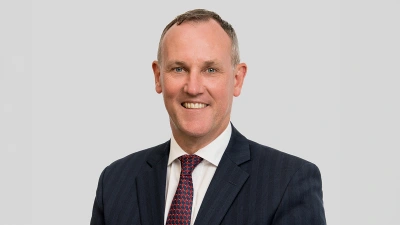Profitable AMP increases planner numbers
The 2005 full year results for AMP have shown a 24 per cent increase in underlying contributions — the organisation’s main profitability measure which removes investment market volatility — to $801 million, with a major contribution from the company’s financial services arm of $515 million in operating margin.
AMP Financial Planning (AMPFP) also confirmed its status as the largest domestic dealer group in 2005, housing 1,288 advisers and managing to grow its numbers by 3 per cent across Australia and New Zealand to 1,906 planners.
The level of operating margin achieved by AMP Financial Services (AFS), which incorporates the financial planning arm, represented a 24 per cent improvement from the $415 million produced last year.
AMPFP itself delivered a year of strong performance with a rise in its cash inflows of 7 per cent to $5.8 billion as well as a boost of 22 per cent in its net cash flows.
These achievements contributed significantly to the overall increase in the AFS 2005 cash inflows of 18 per cent, to $11.2 billion, and the net cash flow growth by AFS of 96 per cent to $2.3 billion.
But while AMP’s profitability was up by 24 per cent in 2005, its consolidated profit after income tax fell 7.3 per cent to $809 million. The main driving factors behind the dip were a $1 billion reduction in its capital base and lower investment gains from the organisation’s stake in HHG, which was sold in September 2005.
“Our focus in 2006 remains on running the business better than it’s ever been run before, capturing scale benefits from volume and market growth, reducing costs to drive efficiency and driving ongoing business transformation,” AMP chief executive Andrew Mohl said.
AMP feels the positive results places it in a good position to take advantage of the rapidly growing Australian retirement savings market.
It has been predicted the Australian pension market will eclipse the size of the Asian market, including China, India and Japan, by 2015.
“We expect growth to come through our core business — by increasing planner productivity, capitalising on the rapid expansion of the corporate superannuation market, investing in and upgrading our risk insurance business, and pursuing opportunities in our asset management business in domestic and Asian markets,” Mohl said.
Recommended for you
In this week’s episode of Relative Return Unplugged, Dr Vladimir Tyazhelnikov from the University of Sydney’s School of Economics joins the show to break down the shifting sands of global trade dynamics and attempt to understand the way US President Donald Trump is employing tariffs.
In this week’s special episode of Relative Return Unplugged, we present shadow treasurer Angus Taylor’s address at Momentum Media’s Election 2025 event, followed by a Q&A covering the Coalition’s plans for the financial services sector.
In this week’s episode of Relative Return Unplugged, AMP chief economist Shane Oliver joins the show to unravel the web of tariffs that US President Donald Trump launched on trading partners and take a look at the way global economies are likely to be impacted.
In this episode of Relative Return, host Laura Dew is joined by Andrew Lockhart, managing partner at Metrics Credit Partners, to discuss the attraction of real estate debt and why it can be a compelling option for portfolio diversification.












